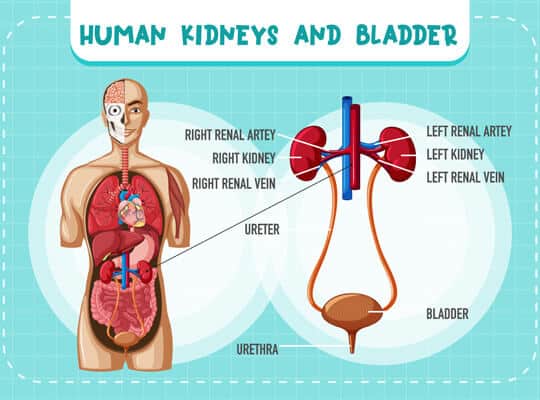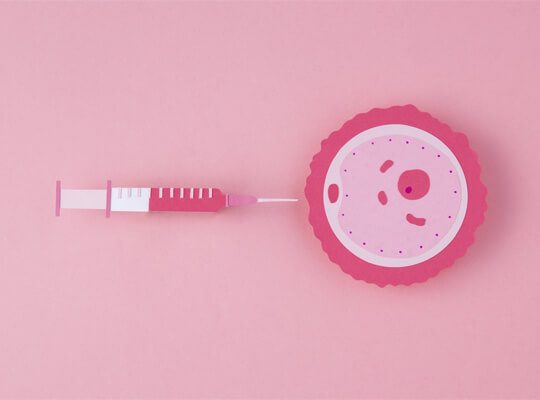Male Incontinence
Table of Contents
Urology is the medical specialty that studies the female and male reproductive organs as well as the urinary tract. It investigates the diagnosis and treatment of diseases affecting organs such as the kidneys, bladder, ureters, urethra, penis, testicles, scrotum, and prostate gland. A treatment for urinary incontinence in the Turkish Republic of Northern Cyprus using cutting-edge technology and experienced doctors may be the answer for you.
What is male incontinence?
Incontinence in men (urinary incontinence) is a condition that occurs as a result of the inability to hold urine in the bladder. The problem can occur due to many reasons such as the brain not giving the right signal to the bladder, obstruction due to the urinary system, or the muscles around the bladder not working well. Urinary incontinence, which is usually a treatable condition, is divided into different types. A doctor’s examination is necessary for the correct diagnosis. The risk of having urinary incontinence increases with age. Urinary incontinence, which can be seen in women as well as men, can also be a symptom of a different disorder.

What are the types of male incontinence?
There are five different types of urinary incontinence.
Urgent incontinence: Also defined as overactive bladder, urgent incontinence is defined as a sudden urge to urinate in both men and women. The individual, who feels the need to urinate before the bladder is full or the bladder muscles are not compressed, is warned by the brain even if there is a small amount of urine in the bladder.
Stress incontinence: It is urinary incontinence when any pressure is felt in the bladder. Generally, leakage can occur in situations such as sneezing, coughing, walking, laughing,or lifting something heavy.
Overflow incontinence: It is a condition that is seen predominantly in men and is encountered when the bladder does not empty properly. When the bladder is filled with too much urine, it overflows and this leads to leakage.
Functional incontinence: It is the condition defined as the inability to reach the toilet on time due to any physical disability or medical condition and urinary incontinence.
Mixed incontinence: It is the situation encountered when problems such as stress incontinence and emergency incontinence give symptoms simultaneously.
Temporary incontinence: It is a temporary incontinence situation that is encountered due to a drug user. Generally, excessive alcohol or caffeine consumption, chronic cough, and urinary tract infections cause temporary incontinence.
What causes male incontinence?
The causes of urinary incontinence are as follows;
• Urinary tract infection
• Bladder infection
• Obesity
• Chronic cough
• Constipation
• Weakening of the bladder or pelvic floor muscles
• Nerve damage
• Loss of sphincter strength
• Prostate cancer
• Prostate enlargement
• Neurological disorders that affect bladder control
• High alcohol consumption
• Smoking
How can you manage symptoms?
There are some procedures recommended by our doctors in TRNC to keep urinary incontinence problems under control. The first one is bladder training. To delay the urge to go to the toilet, one should wait for 10-minutes as soon as urine is felt. The purpose of the application is to increase the time to go to the next urination up to 2.5 to 3.5 hours. Double urination helps to empty the bladder to prevent overflow incontinence. It is defined as waiting a few minutes after urination and trying to urinate again. Fluid and diet management and a change in diet are suggested to regain control of the bladder. Losing weight, increasing physical activity, and reducing the consumption of alcohol and caffeine would help bladder control. Another exercise is pelvic floor muscle exercises. These exercises, also known as Kegel exercises, are effective on stress incontinence. The pelvic floor muscles are activated, which tightens the muscles that are activated during the urination process. Drugs such as anticholinergics, alpha-blockers, mirabegron, and topical estrogen, which are preferred in the treatment of incontinence, also help to empty the bladder and affect tightening the active bladder.
Persistent urinary incontinence
Persistent urinary incontinence is a condition that requires medical support and negatively affects a person’s quality of life. In such a case, surgical treatment can be performed in Turkish Republic of North Cyprus according to the general health status of the patient. In procedures that vary according to the type of incontinence, the aim is to reduce the pressure on the bladder and strengthen the muscles that control urination. Enlargement of the bladder or application of a nerve-stimulating device that controls the detrusor muscles are also used to treat urge incontinence. If the urinary incontinence problem is permanent;
• Pad and pull-up pants
• Bed and chair guards
• Penile sheaths and catheters
• Personal hygiene products and skin care materials
• Special swimsuits and clothes can also be preferred to make the patient’s life easier. In some patients, overflow incontinence can be treated with permanent catheterization. The permanent catheter application, which is applied in cases where the catheter is not sufficient, is the collection of urine with a bag located at the end of the application. Surgery for patients with persistent urinary incontinence initiatives yield effective results.
Male incontinence treatment
In the treatment of urinary incontinence in men, primarily the severity of the incontinence and the underlying cause of the problems is determined. There are some applications recommended by the doctor for the complaint that may require a combined treatment process. Apart from bladder training, planned toilet exercises, fluid and diet management, pelvic floor muscle exercises, and medications, electrodes can be placed in the rectum region with electrical stimulation. Bulk material injections are used in treatments called interventional therapy. This method, in which synthetic material is injected into the tissue surrounding the urethra, makes it possible to keep the urethra closed, thus preventing urine leakage. Injection into the bladder muscle also ensures that the overactive bladder is kept under control. Implanting devices known as nerve stimulators under the skin is also a preferred method for urinary incontinence. Surgical interventions such as suspension procedures, bladder neck suspension, prolapse, surgery, or artificial urinary sphincter can be used when adequate efficiency is not achieved from the applications. The common goal in all applications is to prevent the involuntary flow of urine from the bladder. In addition to surgical interventions, some products can be preferred for medical treatment purposes. With pads, protective clothing, and catheter applications, a hygiene and sterilization environment is created. Thanks to the products, the discomfort caused by urinary incontinence is solved.

For More Information
Please do not hesitate to contact us for more information on the subject.



